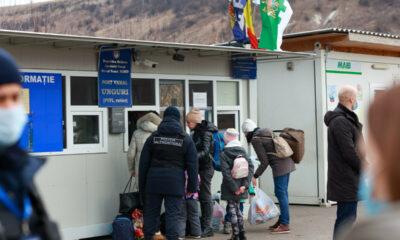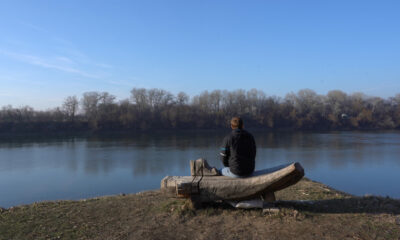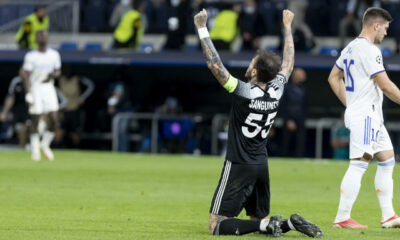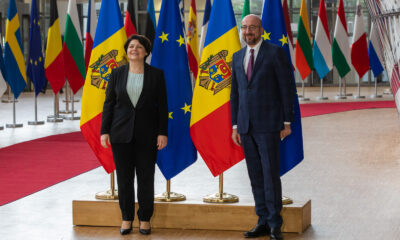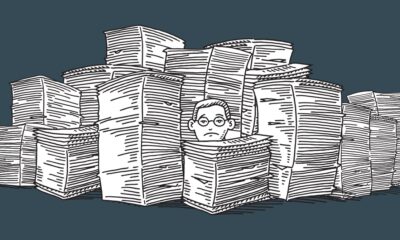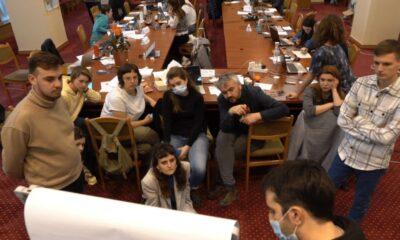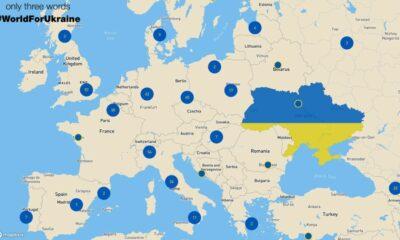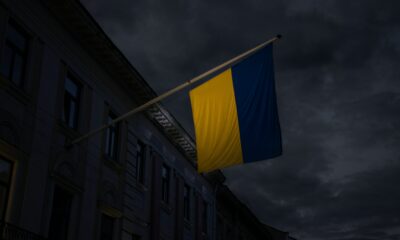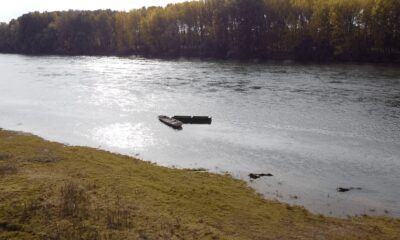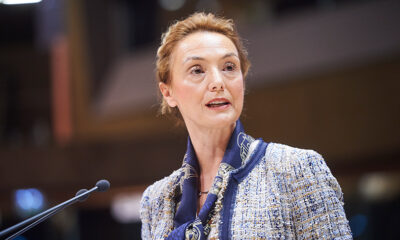Important
Expert: The possible effects of snap elections in the Republic of Moldova
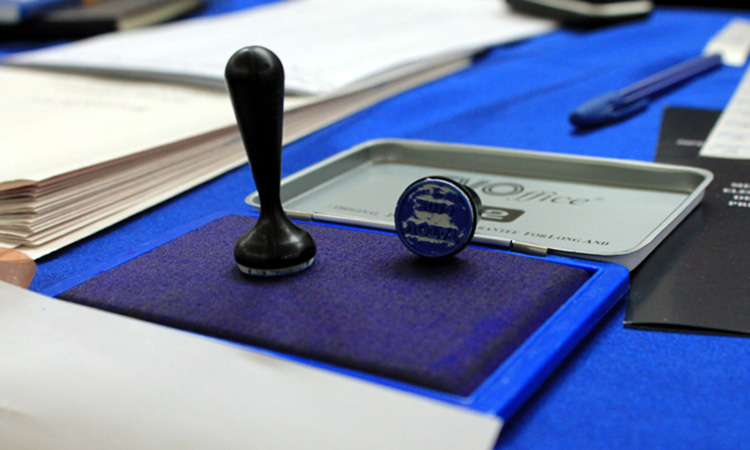
The Institute for European Policies and Reforms (IEPR) published recently an analytical note that describes the possible effects that the snap parliamentary elections in the Republic of Moldova could have.
The main conclusion expressed in the note: the decline in the geopolitical character of the recent parliamentary elections, the delay in functioning of the institutional structures of the newly elected parliament, and the uncertainty about the formation of a parliamentary majority capable of appointing a new government, escalates the risk of having snap parliamentary elections.
According to the author of the document, Mihai Mogîldea, an IEPR associate expert, more than 2 months after the parliamentary elections, the political parties that entered the Parliament failed to advance in the establishment of a parliamentary majority. The only rounds of consultations, organized by the Socialist Party of the Republic of Moldova (PSRM) and the political bloc ACUM, revealed the diametrically opposed positions regarding a possible coalition formation.
Moreover, the character of the geopolitical vote, used in the previous elections as a powerful tool of dividing the society on the basis of language, ethnicity, geographical location and geopolitical options, has changed. “As less geopolitical discourse during the last pre-electoral and electoral period was present, the attention of the political parties was focused on other areas besides foreign and security policy of the Republic of Moldova,” stated Mogîldea.
At the same time, by analyzing the impact of the mixed electoral system and electoral rhetoric on the results of the parliamentary elections, the author concluded that the current electoral system favoured to a large extent the Democratic Party of Moldova (DPM), which with a result of 23.62% of the votes (the results in the national constituency) obtained 30 seats in Parliament (out of which 17 seats were allocated based on single-seat constituencies results). On the other hand, the mixed electoral system clearly disfavoured the ACUM bloc, which received 26.84% of the votes and only 26 seats (12 seats based on single-seat constituencies results). Even if the PSRM obtained the highest electoral score (31.15%) and the highest number of seats (35), it proved to suffer the greatest loss from the mixed electoral system. Due to the configuration of the single-seat constituencies, the PSRM lost its primacy in the regions considered to be pro-Russian.
Therefore, the following effects of early parliamentary elections in Moldova can be highlighted:
Effect 1. Running early parliamentary elections in in a short space of time after the local elections could favor the DPM, which could get a higher score of about 5-7% due to its administrative resources at the local level.
Effect 2. The active involvement of President Igor Dodon in a possible electoral campaign for the snap parliamentary elections would facilitate the wider mobilization of Socialists’ voters.
Effect 3. Keeping the non-geopolitical character of the electoral campaign might disadvantage the PSRM, whose electorate may partially and gradually migrate to the supporters of the “Șor” Party.
Effect 4. The organisation of snap parliamentary elections could cause a lower presence in the polls during the fifth voting process organized in only three years.
Important
#WorldForUkraine – a map that shows the magnitude of the world’s actions against Russian aggression

The international community and volunteers from all over te world have launched #WorldForUkraine as a platform that shows the magnitude of the world’s actions against the Russian aggression. In a digital world – it is an interactive map of public support of Ukrainians under the hashtag #WorldForUkraine – rallies, flash mobs, protests around the world. In the physical dimension – it is your opportunity to take to the streets and declare: “No to Putin’s aggression, no to war.”
„Today, along with the political and military support, emotional connection with the civilized world and truthful information are extremely important for Ukraine. The power to do it is in your hands. Join the #WorldForUkraine project and contribute to the victorious battle against the bloodshed inflicted on Ukraine by the aggression of the Russian Federation”, says the „about the project” section of the platform.
Go to the streets — Tell people — Connect and Unite — Become POWERFUL
Volunteers have launched #WorldForUkraine as a platform that shows the magnitude of the world’s actions against Russian aggression. In digital world – it is an INTERACTIVE MAP of public support of Ukrainians worldforukraine.net under the hashtag #WorldForUkraine – rallies, flash mobs, protests around the world. In the physical dimension – it is your opportunity to take to the streets and declare: “No to Putin’s aggression, no to war.” There you may find information about past and future rallies in your city in support of Ukraine. This is a permanent platform for Ukrainian diaspora and people all over the world concerned about the situation in Ukraine.
So here’s a couple of things you could do yourself to help:
* if there is a political rally in your city, then participate in it and write about it on social media with geolocation and the hashtag #WorldForUkraine
* if there are no rallies nearby, organize one in support of Ukraine yourself, write about it on social media with geolocation adding the hashtag #WorldForUkraine
The map will add information about gathering by #WorldForUkraine AUTOMATICALLY
Your voice now stronger THAN ever
All rallies are already here: https://worldforukraine.net
Important
How is Moldova managing the big influx of Ukrainian refugees? The authorities’ plan, explained
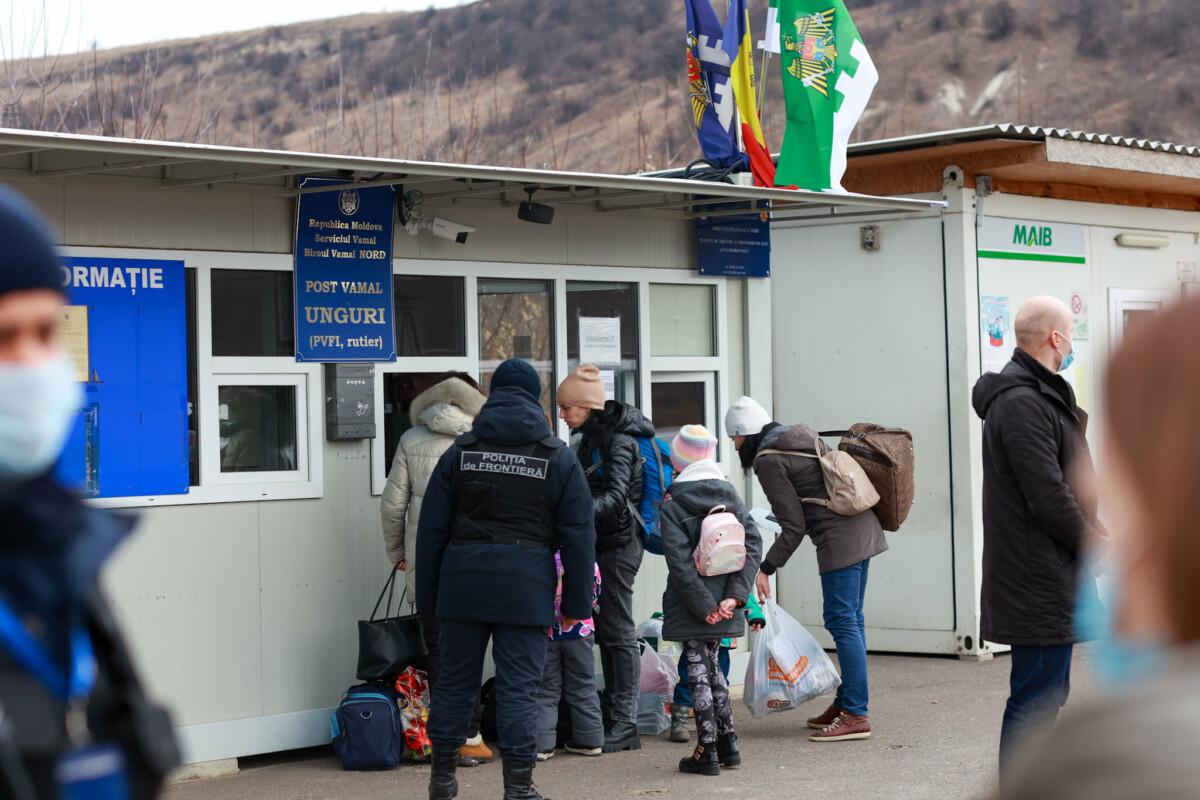
From 24th to 28th of February, 71 359 Ukrainian citizens entered the territory of Republic of Moldova. 33 173 of them left the country. As of this moment, there are 38 186 Ukrainian citizens in Moldova, who have arrived over the past 100 hours.
The Moldovan people and authorities have organized themselves quickly from the first day of war between Russia and Ukraine. However, in the event of a prolonged armed conflict and a continuous influx of Ukrainian refugees, the efforts and donations need to be efficiently managed. Thus, we inquired about Moldova’s long-term plan and the state’s capacity to receive, host, and treat a bigger number of refugees.
On February 26th, the Ministry of Labor and Social Protection of Moldova approved the Regulation of organization and functioning of the temporary Placement Center for refugees and the staffing and expenditure rules. According to the Regulation, the Centers will have the capacity of temporary hosting and feeding at least 20 persons, for a maximum of 3 months, with the possibility of extending this period. The Centers will also offer legal, social, psychological, and primary medical consultations to the refugees. The Center’s activity will be financed from budget allocations, under Article 19 of Provision no. 1 of the Exceptional Situations Commission from February 24th, 2022, and from other sources of funding that do not contravene applicable law.
The Ministry of Inner Affairs and the Government of Moldova facilitated the organization of the volunteers’ group “Moldova for Peace”. Its purpose is to receive, offer assistance and accommodation to the Ukrainian refugees. The group is still working on creating a structure, registering and contacting volunteers, etc. It does not activate under a legal umbrella.
Lilia Nenescu, one of the “Moldova for Peace” volunteers, said that the group consists of over 20 people. Other 1700 registered to volunteer by filling in this form, which is still available. The group consists of several departments:
The volunteers’ department. Its members act as fixers: they’re responsible for connecting the people in need of assistance with the appropriate department. Some of the volunteers are located in the customs points. “The Ministry of Inner Affairs sends us every day the list of the customs points where our assistance is needed, and we mobilize the volunteers”, says Lilia Nenescu.
The Goods Department manages all the goods donated by the Moldavian citizens. The donations are separated into categories: non-perishable foods and non-food supplies. The volunteers of this department sort the goods into packages to be distributed.
The Government intends to collect all the donations in four locations. The National Agency for Food Safety and the National Agency for Public Health will ensure mechanisms to confirm that all the deposited goods comply with safety and quality regulations.
The Service Department operates in 4 directions and needs the volunteer involvement of specialists in psychology, legal assistance (the majority of the refugees only have Ukrainian ID and birth certificates of their children); medical assistance; translation (a part of the refugees are not Ukrainian citizens).
According to Elena Mudrîi, the spokesperson of the Ministry of Health, so far there is no data about the number of Covid-19 positive refugees. She only mentioned two cases that needed outpatient medical assistance: a pregnant woman and the mother of a 4-day-old child.
The Accommodation Department. The volunteers are waiting for the centralized and updated information from the Ministry of Labor about the institutions offering accommodation, besides the houses offered by individuals.
The Transport Department consists of drivers organized in groups. They receive notifications about the number of people who need transportation from the customs points to the asylum centers for refugees.
The municipal authorities of Chișinău announced that the Ukrainian children refugees from the capital city will be enrolled in educational institutions. The authorities also intend to create Day-Care Centers for children, where they will be engaged in educational activities and will receive psychological assistance. Besides, the refugees from the municipal temporary accommodation centers receive individual and group counseling.
In addition to this effort, a group of volunteers consisting of Ana Gurău, Ana Popapa, and Andrei Lutenco developed, with the help of Cristian Coșneanu, the UArefugees platform, synchronized with the responses from this form. On the first day, 943 people offered their help using the form, and 110 people asked for help. According to Anna Gurău, the volunteers communicate with the Government in order to update the platform with the missing data.
Translation from Romanian by Natalia Graur
Opinion
Russia And Ukraine At The Beginning of 2022
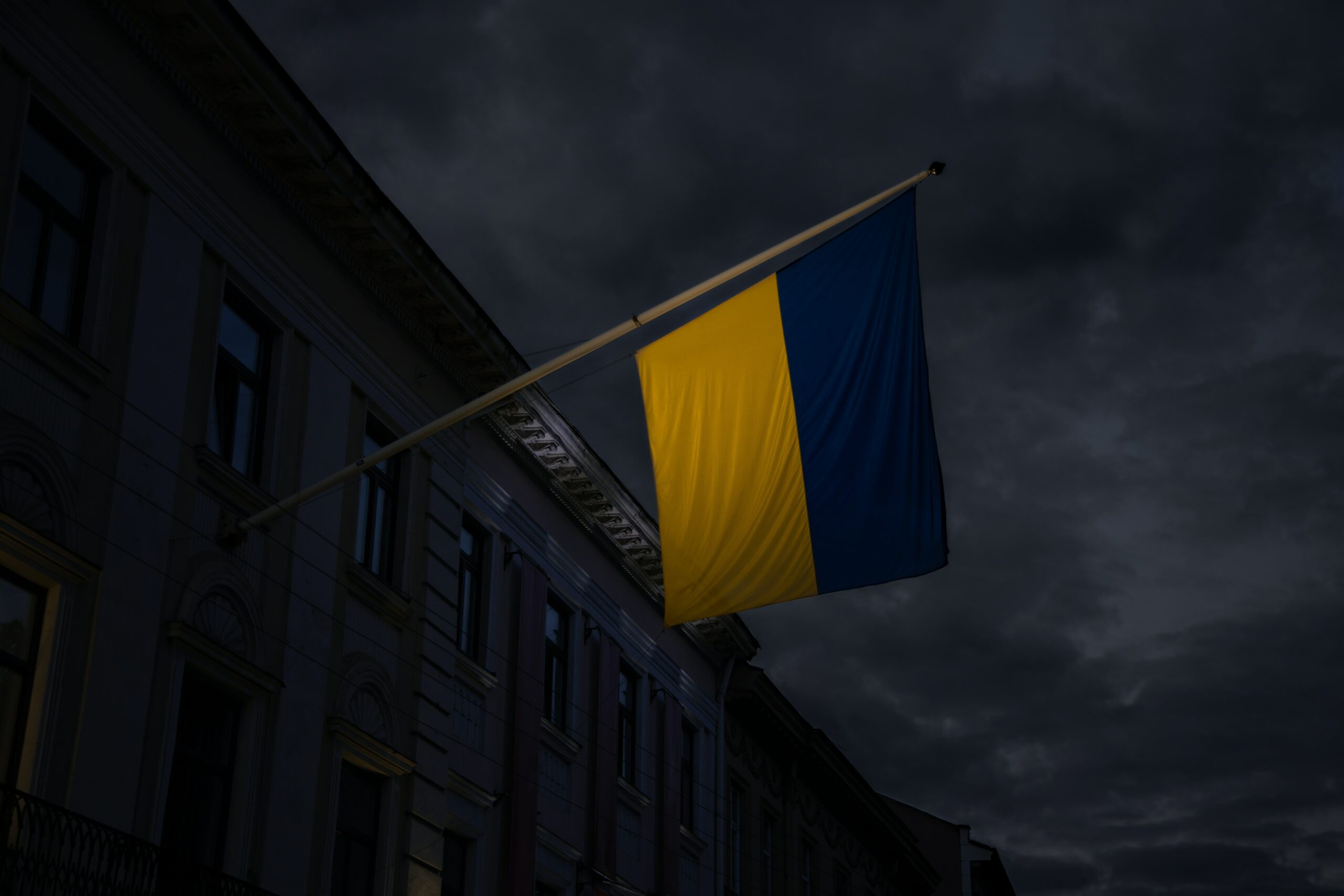
This opinion piece was written by Dr. Nicholas Dima. Dr. Dima was formerly a Professor of Geography and Geopolitics at Djibouti University, St. Mary’s University College and James Madison University. From 1975 to 1985 and from 1989 to 2001, Dr. Dima was a Writer and Field Reporter at Voice of America. The opinion does not necessarily represent the opinion of the editorial staff of Moldova.org.
***
The 21st Century Russian Federation is a rebirth of the 19-th Century Tsarist Empire; a huge territory inhabited by hundreds of ethnic groups held together by an authoritarian government. Having acquired a diversity of lands and peoples that would not freely want to be together, Moscow has to be on guard. It has to keep an eye on those who are inside the federation and to make sure that no outsiders threaten its territory. Otherwise, in a nutshell, Ukraine is Russia’s biggest dilemma and Russia is Ukraine’s biggest nightmare!
In 1991 Moscow agreed reluctantly to the dissolution of the former USSR. Ukraine became independent and consented to give up its nuclear arsenal inherited from the Soviet Union in exchange for territorial guaranties. Russia did not keep its engagement. It violated the Minsk protocol and in 2014, after a hybrid war, annexed Crimea. At the same time, pro-Russian forces took over two important eastern Ukrainian regions, Lugansk and Donetsk, where the population is ethnically mixed and somehow pro-Russian.
Since the annexation of Crimea, Moscow has strengthened its military presence in the peninsula and in the Black and Azov Seas. Furthermore, it built a strategic bridge that connects Crimea with the Russian mainland. Then, Russia began to reject NATO activities in East Europe and to denounce the presence of the US Navy in the Black Sea as provocations. In order to counter NATO, Russia also brought some of its warships from the Caspian Sea to the Black Sea through the Volga-Don Canal.
During recent years, Ukraine approached the United States and NATO and asked for assistance and, eventually, for membership in the EU and possibly NATO. For Moscow, however, Ukraine is an essential buffer zone against the West. With President Vladimir Putin lamenting the dismemberment of the USSR and embracing the traditional Russian expansionist mentality, the perspective of Ukraine’s NATO membership would be an existential threat.
The current situation at the Russo-Ukrainian border is tense and the stakes are high. Neither country is satisfied with the status quo, but the choices are very risky. The important Donbas region of East Ukraine, controlled by pro-Russian forces, is in a limbo. Ukrainian President Volodymyr Zelensky is losing support among the people and must defend his country’s integrity. Currently, Putin has the upper hand and military superiority on his side, but using brute force in the conflict could trigger further Western economic sanctions and even military hostility.
For now it seems that Moscow is mainly posturing, but the true Russian intentions are not clear. Thus, a miscalculation could trigger a catastrophe of international proportions. No one knows how the events will play out, but the danger is obvious. Moscow is playing with fire. Apparently, it does not want a full war, neither the current stalemate, nor a retreat. What does it want? It seems that Moscow knows what it wants, but not necessarily what it can!
Regionally, the situation between Europe and Russia is complex and internationally the world is confronted with threatening new realignments. With the help of Russia, Belarus has encouraged thousand of Middle East migrants to assail the Polish border and the European Union. Poland has mobilized its forces and NATO and EU are on alert. The three Baltic countries also feel threatened. And the recent Russo-Chinese economic cooperation and military rapprochement reinforce the international apprehension.
Since the dissolution of the USSR, Russia went through several uneasy stages. During the first years of transition toward a new political system Russia experienced economic decline and popular unrest. Then, Putin took over and managed to stabilize the country. Russia opted for security and stability instead of political democracy and economic prosperity. At the same time, Kremlin focused its resource on the military and strengthened Russia’s war capacity.
For the time being, Russia may want to perpetuate the current situation and to keep Ukraine under its thumb. However, things are not static and sometimes they move unpredictably. What if Ukraine does become a NATO member? Then, it will be impossible for Russia to challenge Kyiv without triggering a devastating war. On the other hand, waiting is not in Russia’s advantage. Demographically, ethnic Russians are declining and the non-Russians, mostly Muslims, are fast increasing. The continuous emigration to the West of many Russians is not helping the population balance either. This trend will almost certainly renew old conflicts especially in the unsettled Caucasus region…
Attacking Ukraine now, overtly or through a hybrid war, would be risky for Russia and would not bring a lasting solution to the dispute. The war could destabilize Kyiv and even dismember Ukraine, but it would also destabilize the Russian Federation. The present tension will probably be diffused, but the next time around, in about 10 to 20 years, Putin will be gone, Moscow itself will be in disarray, Caucasian Muslims will be asking openly for independence and Ukraine will be ready and capable to fight Russia.
A Russo-Ukrainian war, now or later, will immediately have regional effects engaging Belarus and most likely Poland, the Baltic States, Moldova, Romania and implicitly NATO. Romania, for example, will follow its western allies, but it could not ignore the fact that certain formerly Romanian lands are now part of Ukraine. As for Moldova, beyond the facts that Moldovans are Romanians, its Transnistrian (Transdnestr) area is entirely under Russian control and in an eventual war will be used by Moscow against Ukraine.
Nicholas Dima, January 1, 2022


